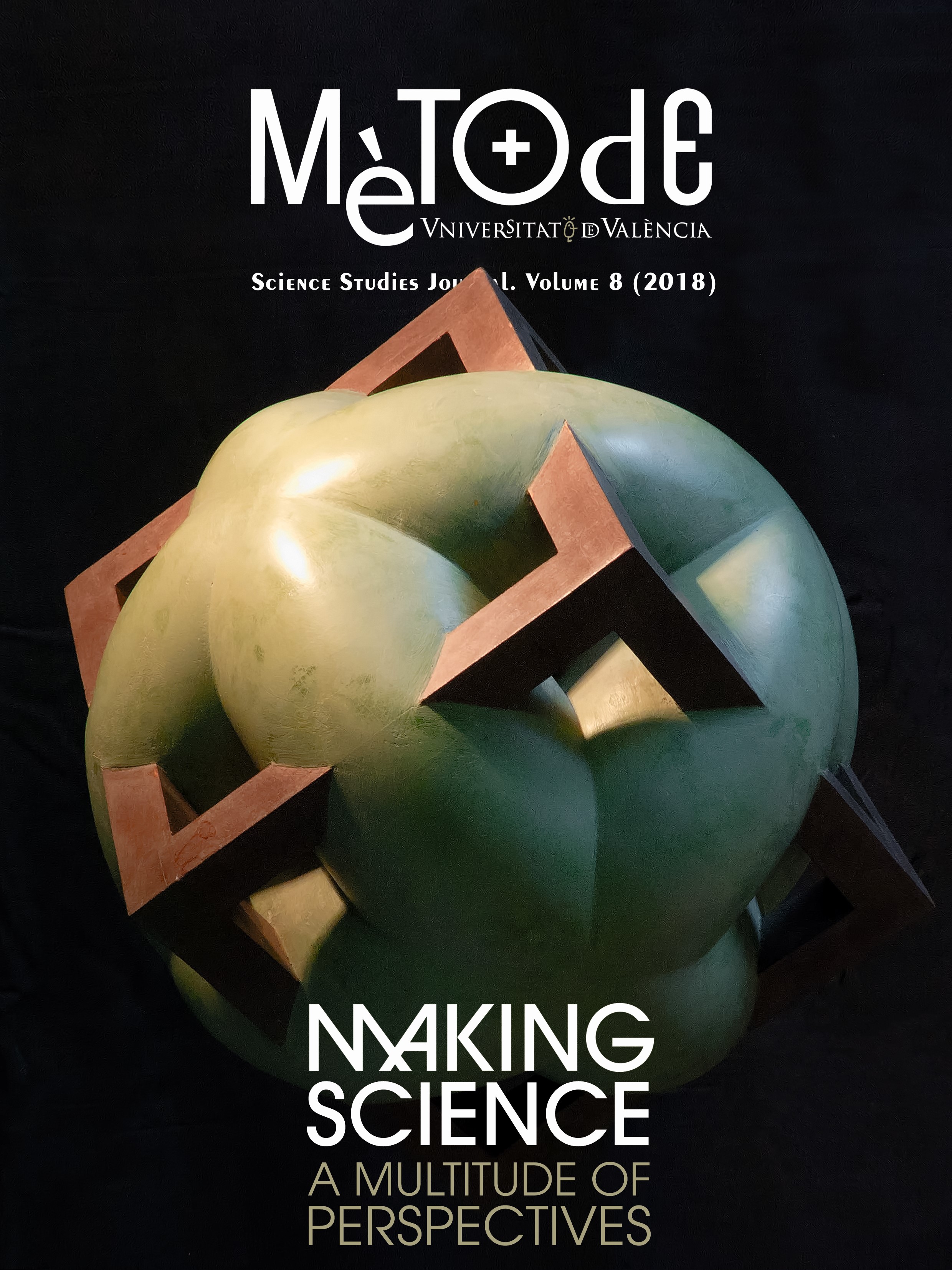A science fiction implant: Organ transplants in literature
DOI:
https://doi.org/10.7203/metode.8.10498Keywords:
transplants, literature, bioethics, Russian science fiction, organ donation Abstract
Abstract
Long before the first successful transplants were performed on humans, some writers had wrote about them in fiction. In this article, we show some examples and explain how even seemingly crazy ideas were inspired by real experiments. Starting from the 1970s, when transplants had already been standardised, some narratives started to pose real problems such as the lack of donors. The works mentioned here show the importance of literature and its contributions to the ethical and social debate surrounding transplants. They can also spread those debates to many other sectors.
 Downloads
Downloads
 References
References
Alas, L. (1989). La Regenta. Madrid: Cátedra.
Alonso, J. R. (2013). Los milagros de San Cosme, San Damián y Pedro Cavadas. Retrieven on 3 July 2017 from https://jralonso.es/2013/02/28/los-milagros-de-san-cosme-san-damian-y-pedro-cavadas
Alsina, J. (2014). Ombres de foc. Maçanet de la Selva: Gregal.
Barker, C. F., & Markmann, J. F. (2013). Historical overview of transplantation. Cold Spring Harbor Perspectives in Medicine, 3(4), a014977. doi: 10.1101/cshperspect.a014977
Beliáiev, A. (2013). La cabeza del profesor Dowell. Barcelona: Alba.
Bulgákov, M. (1993). Cor de gos. Barcelona: Club Editor.
Canavero, S. (2013). HEAVEN: The head anastomosis venture Project outline for the first human head transplantation with spinal linkage (GEMINI). Surgical Neurology International, 4, s335–342. doi: 10.4103/2152-7806.113444
Darwin, C. (1984). L’origen de l’home. Sobre la selecció en relació amb el sexe. Barcelona: Biblioteca Clàssics de la Ciència.
De Kerangal, M. (2015). Reparar els vius.Barcelona: Angle.
De Manuel, J. (2001). El cor. En Disseccions (pp. 11–21). Barcelona: Proa.
Fabregat, R. (1997). La dama de glaç. Lleida: Pagès.
Hunter, J. (1835). The works of John Hunter: with notes. London: Longman, Rees, Orme, Brown, Green and Longman.
Ishiguro, K. (2006). No em deixis mai. Barcelona: Empúries.
Krementsov, N. (2009). Off with your heads: Isolated organs in early Soviet science and fiction. Studies in History and Philosophy of Biological and Biomedical Sciences, 40(2), 87–100. doi: 10.1016/j.shpsc.2009.03.001
Kureishi, H. (2004). El cuerpo. Barcelona: Anagrama.
Machado, C., Korein, J., Ferrer, Y., Portela, L., García, M. C., & Manero, J. M. (2007). The concept of brain death did not evolve to benefit organ transplants. Journal of Medical Ethics, 33(4), 197–200. doi: 10.1136/jme.2006.016931
Mollaret, P., & Goulon, M. (1959). Le coma dépassé (mémoire préliminaire). Revue de Néurologie, 101, 3–15.
Pratt, D. J. (2001). Signs of science. Literature, science, and Spanish modernity since 1868. West Lafayette: Purdue University Press.
Silverberg, R. (1986). Trasplante obligatorio. In I. Asimov, C. G. Waugh, & M. H. Greenberg (Eds.), Trasplante obligatorio. La biología en la ciencia ficción (pp. 120–133). Barcelona: Martínez Roca.
Voragine, S. (2016). La leyenda dorada. Madrid: Alianza.
Downloads
Published
How to Cite
-
Abstract1575
-
PDF600
Issue
Section
License
![]()
All the documents in the OJS platform are open access and property of their respective authors.
Authors publishing in the journal agree to the following terms:
- Authors keep the rights and guarantee Metode Science Studies Journal the right to be the first publication of the document, licensed under a Creative Commons Attribution-NonCommercial-NoDerivatives 4.0 International License that allows others to share the work with an acknowledgement of authorship and publication in the journal.
- Authors are allowed and encouraged to spread their work through electronic means using personal or institutional websites (institutional open archives, personal websites or professional and academic networks profiles) once the text has been published.





